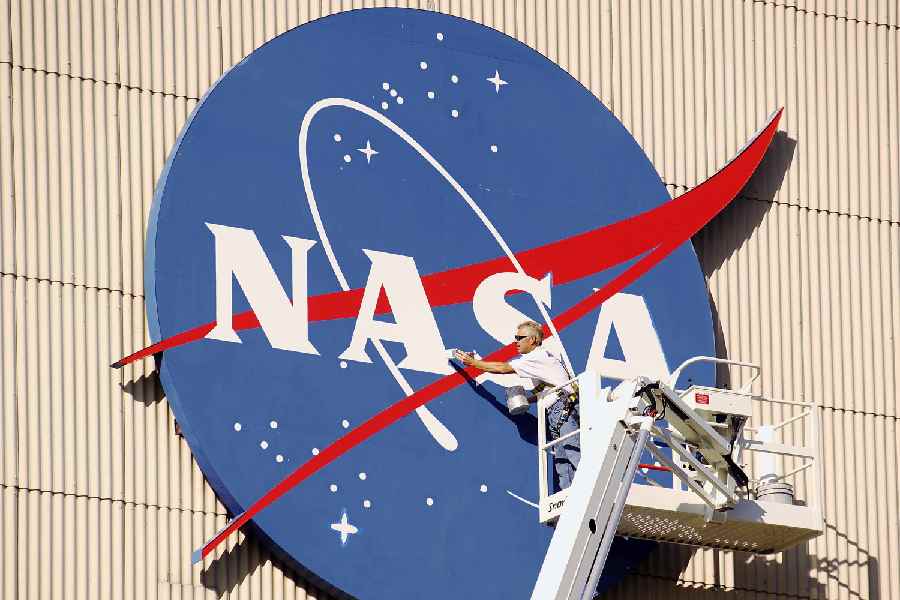NASA will be renting some cool wheels to drive around the moon.
Space agency officials announced on Wednesday that they have hired three companies to come up with preliminary designs for vehicles to take NASA astronauts around the lunar south polar region in the coming years. After the astronauts return to Earth, these vehicles would be able to self-drive around as robotic explorers, similar to NASA’s rovers on Mars.
The self-driving capability would also allow the vehicle to meet the next astronaut mission at a different location.
“Where it will go, there are no roads,” Jacob Bleacher, the chief exploration scientist at NASA, said at a news conference Wednesday. “Its mobility will fundamentally change our view of the moon.”
The companies are Intuitive Machines of Houston, which in February successfully landed a robotic spacecraft on the moon; Lunar Outpost of Golden, Colorado; and Venturi Astrolab of Hawthorne, California. Only one of the three will actually build a vehicle for NASA and send it to the moon.
NASA had asked for proposals of what it called the lunar terrain vehicle, or LTV, that could drive at speeds up to 9.3 mph, travel a dozen miles on a single charge and allow astronauts to drive around for eight hours.
The agency will work with the three companies for a year to further develop their designs. Then NASA will choose one of them for the demonstration phase.
The LTV will not be ready in time for the astronauts of Artemis III, the first landing in NASA’s return-to-the-moon program, which is currently scheduled for 2026.
The plan is for the LTV to be on the lunar surface ahead of Artemis V, the third astronaut landing that is expected in 2030, said Lara Kearney, manager of the extravehicular activity and human surface mobility program at the NASA Johnson Space Center.
“If they can get there earlier, we’ll take it earlier,” Kearney said.
The LTV contract will be worth up to $4.6 billion over the next 15 years — five years of development and then a decade of operations on the moon, most of it going to the winner of this competition. But Kearney said the contracts allow NASA to later finance the development of additional rovers, or allow other companies to compete in the future.
The contract follows NASA’s recent strategy of purchasing services rather than hardware.
In the past, NASA paid aerospace companies to build vehicles that it then owned and operated. That included the Saturn V rocket, the space shuttles and the lunar roving vehicles — popularly known as moon buggies — that astronauts drove on the moon during the last three Apollo missions in 1971 and 1972.
The new approach has proved successful and less expensive for the transportation of cargo and astronauts to the International Space Station. NASA now pays companies, notably Elon Musk’s SpaceX, fixed fees for those services, more akin to plane tickets or FedEx shipments.
For the company chosen to build the LTV, the vehicle will remain its property, and that company will be able to rent it to other customers when it is not needed by NASA.
“It’s commercially available for us as a commercial business to sell capacity on that rover,” said Steve Altemus, the chief executive of Intuitive Machines, “and do that for international partners and for other commercial companies and space agencies around the world.”
The competition created alliances between small startups and larger, more established aerospace companies, as well as car companies. The Intuitive Machines team includes Boeing, Northrop Grumman and Michelin, the tire maker. Lunar Outpost added to its team Lockheed Martin, Goodyear and General Motors, which had helped design the Apollo moon buggies.
Astrolab is working with Axiom Space of Houston, which has sent private astronauts to the space station and is building a commercial module to the International Space Station. Astrolab announced last year that it had signed an agreement to send one of its rovers to the moon on a SpaceX Starship rocket as early as 2026. That mission is independent of whether it is selected by NASA, a company spokesperson said.
While Lunar Outpost is competing with Intuitive Machines on this contract, it plans to work with the company separately, sending smaller robotic rovers to the moon on the company’s lunar landers.
The New York Times News Service











